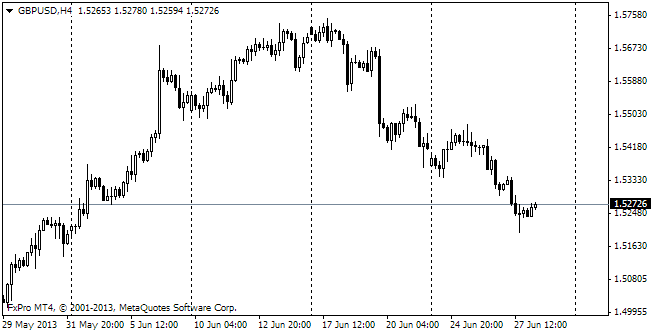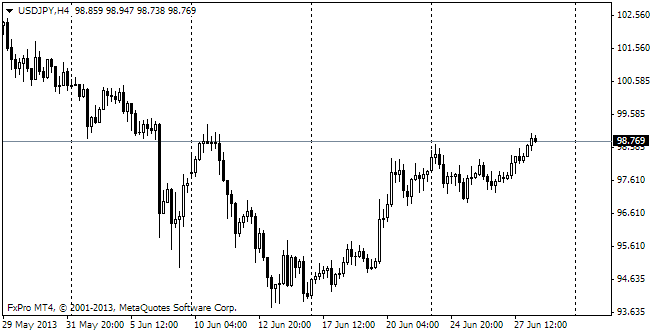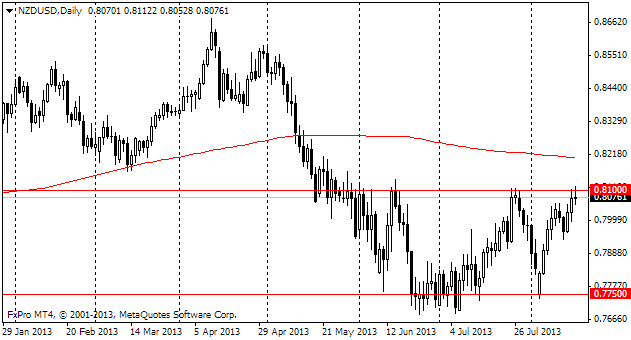EUR/usd
It was quite a boring trading session for the pair, nothing to compare with Brazil's defeat in the semifinal. It is not the first time the US dollar takes timid attempts to grow in the morning and then falls down in the afternoon. It is remarkable that the depreciation of the US currency (the growth of eurusd) is going on against the correction in the stock exchanges. The latter are concerned about the ratio of corporate profits before the beginning of the reporting season – Samsung's downward revision of the forecasts has its effect. Anyway, it doesn't spoil the general picture of gradual purchasing of the pair on the dips. The single currency held above 1.3500 last month and now it is striving to stay above 1.3600. The prospective buyers from Asia (diversification of the CB reserves away from the dollar) quietly take the disastrous data on Germany's manufacture or decrease in the country's trade turnover. Besides, the yields of EU bonds keep falling. Even without concentrating on the decline of the half-year Greek bond yields to 2.05% since last January, it is still hard to overlook the decrease in the AU 10-year bond yields by a percent, from 2.3% to below 1.5% over the same period. In the meantime, the yields of the US bonds are gradually rising. It makes the EU bond yields lower, in theory, but we can't ignore the fact that they are now much underestimated in comparison with the US ones. The markets are now in the phase, when they are trying to saturate themselves with the EU bonds, now less risky, differentiating investments in the US bonds and currency. Only after saturation with the EU bonds, weakness of the single currency will become obvious. Americans don't hurry with tapering now – the dollar is likely to grow in the half-year before rate increases and in the half-year after them. The market considers that there is about a year before that moment.
GBP/USD
The British currency finds buyers even when the country's statistics don't look very reassuring. The message about decline of the Industrial Production Index by 0.7% in May against the expected growth by 0.3% pushed the cable down by 60 pips first. But below 1.71 there turned out to be enough buyers to stop the decline. And by the beginning of trading in Asia the pair had completely recovered to the levels preceding the news release. It was spontaneous profit taking. Nothing more for now. Later in the day NIESR published its estimate of the economic growth for three months to May. The institute estimates the growth at 0.9%, which is the highest rate since April 2013. The pound's strength is grounded on expectations of policy toughening in the near future and plenty of positive reports on the economic activity. Yet, we believe that the latter will significantly decrease in the coming weeks.

USD/JPY
Failing to reach the top of the 101.20-102.75 range, so customary in the recent months, the Japanese yen enjoyed demand on depreciation of the US currency. Besides, yen-buyers benefited from the correction in the stock exchanges, where investors are worried about the quarterly corporate reports. The last reason will hardly stir a more considerable decline of the pair: this is mainly a reflex action of investors. The dollar is now more of a carry-trade currency than before the financial crisis.

NZD/USD
The Kiwi hit a fresh three-year high yesterday. The main reason was a possibility of raising of the country's credit rating. Fitch revised the rating forecast from stable to positive. It helped nzdusd rise to 0.88. 0.8842, the high of 2011, is not far away. Only tough Fed's minutes may stop this rally to the historic highs.
